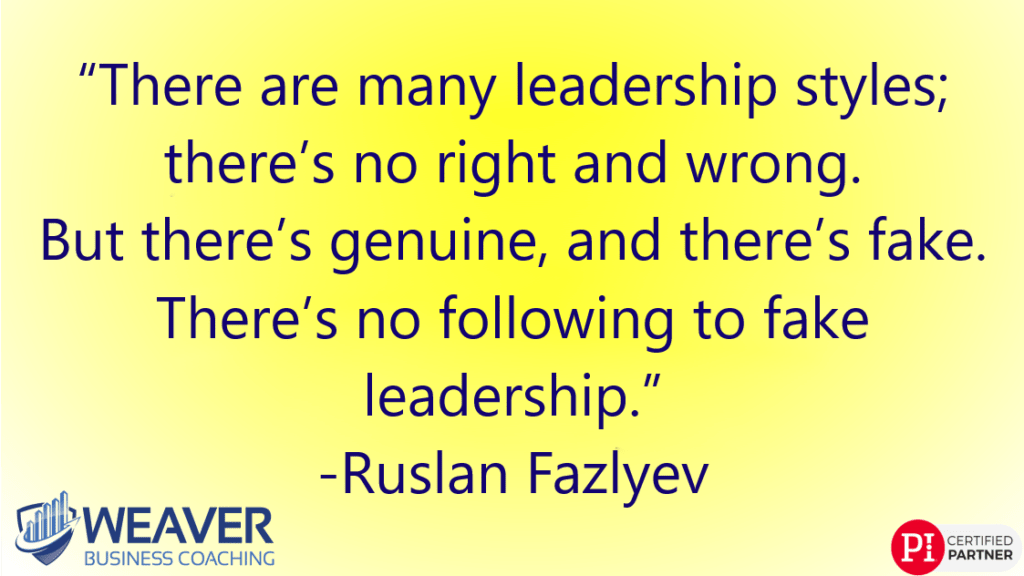Whether you have been in a leading position most of your life, or are new to leading others, there are always ways to improve. As we seek to improve ourselves, we can be bombarded with tips from peers or colleagues. You may have learned about leadership from observing a current or past boss and developed your own ideas of leadership from them.
The Gallup Job Satisfaction poll in 2017 found that 85% of employees were dissatisfied with their jobs, placing much of the blame on supervisors and bosses. Although most were unhappy with their superiors, the majority of employees were unwilling to change their circumstances. Post-pandemic, employees have been more willing to change jobs to find more job satisfaction. The Conference Board Job Satisfaction 2023 survey showed that 62% of employees are satisfied with their jobs, an all-time high for the U.S.
In today’s business world, leaders need to stay on their game or potentially lose employees for better circumstances. Regardless of title, we need to recognize that all of us have to be accountable leaders to improve circumstances, environments, and outcomes. We need to understand leadership better and get past the common myths of leadership.

Myth 1: Leaders need to have all the answers
This persistent myth often plagues and intimidates up-and-coming leaders. They mistakenly believe that, because they’re managing a team, everyone will be relying on them for answers to any issue that comes up. Leaders with this attitude find it hard to accept fault, listen to others, or change directions as needed.
As a leader, you don’t need to have all the answers and, in fact, you shouldn’t. If you have all the answers, then your team is not utilizing their knowledge and skills, or, worse, you are stifling their expertise and growth. Leaders need to be humble and conquer their own pride when it comes to making decisions. Accepting fault and learning from others models a growth mindset and earns the respect of those you work with.
Myth 2: Leaders must always be “on”
No one is always “on”. We are human and not machines. Even the most ambitious, competent, and enthusiastic leaders need time to relax. Working 24/7 is a guaranteed way to burn yourself out. As a leader, be sure to set boundaries. Take time to reflect and focus on what matters to you, whether it is exercising, family, friends, or a hobby. These breaks help you to de-stress and stay motivated. Stressed leaders become less energized, less focused, and less creative as a leader.
Myth 3: A leader’s gender matters
While it’s true that men and women may take slightly different approaches and value different traits as leaders. There is absolutely no evidence to prove that one gender is more effective at leading than another. Regardless of gender, a leader needs to stimulate the enthusiasm and desire to grow and be a part of a larger vision. Men and women are both very capable of delivering clear communication of goals and challenges.

Myth 4: Leaders need to “get their hands dirty”
Leaders need to understand the daily tasks and projects they’re assigning out to their team, which should not be underestimated. However, there’s a distinct difference between leading and doing; if you’re spending all your time immersing yourself in your team’s tasks, you could undermine your own success as a leader. As a leader, you should be primarily focused on tasks like decisions, priorities, and accountabilities. Non-leadership tasks should be automated, delegated, or outsourced so that you’re not draining yourself mentally or physically.
Some leaders believe their willingness to get their hands dirty is key to gaining the respect of those they lead. But the reality is that doing this means your team is less productive than it could be. Worse, it can often lead to frustration and resentment in your team as they deliver on their tasks of doing and you’re slacking on your responsibility of leading.
Myth 5: Leaders can hire self-starters and let go of the reins
Many leaders want to hire self-starters in hopes of not having to lead them. Although motivated people can be better to work with and need less supervision, a leader still must provide direction, support, and motivation. I have seen far too many ‘motivated self-starters’ become unmotivated due to an unsupportive environment, which can be just as demotivating as micromanagement. Leaders have to find a balance between managing and hands-off leadership, and this balance has to evolve as the employee becomes more seasoned.

Myth 6: Leaders are only at the top
Leadership is not one-dimensional with responsibility for leadership belonging to one or two people at the top of a pyramid of power and control. On any given day, anyone in an organization should be able to move to stages of leadership as opportunities or need for various skill-sets arise. We are all leaders in one way or another, and when we hold a wider view of leadership, we can work together in a way that utilizes the unique talents of everyone.
Myth 7: Leaders are born
Ever hear the phrase, “They’re a natural leader”? What does that really mean? The underlying belief is that leadership skills are innate. But the truth is we are all capable of becoming powerful leaders by taking full responsibility for our actions and skills and by being willing to contribute to any endeavor. A title does not make someone a leader.
This is true of entrepreneurs and founders as well. Just because you started a company does not automatically mean you are the best to lead the company. The company needs to be led by Someone who has a clear vision, can get others to buy into it, listens, can grow talent, and can influence others. If you don’t possess these qualities, work on them. Or, allow someone better suited to take the helm.

Myth 8: Great leaders work alone
This myth stems from a feeling that we have to stay separate from others to maintain an alpha position and lead effectively. A much more effective leadership style is leading and coaching those with whom we work. Employees want their leaders to care for them genuinely. They want to feel respected, and for their thoughts and concerns to be listened to with kindness. The best way to sharpen these leadership skills is by boosting emotional intelligence. If you don’t get to know your people, then how can you direct them, bring out their strengths, and motivate them?
Myth 9: Leadership is about results, not people
Akin to the previous myth, leadership is not all about results at the sacrifice of people. Unfortunately, when we are disconnected from the feelings of ourselves and others, this incessant “doing” leads to actions that are not grounded and leaves us feeling disconnected and desperate for meaning and belonging. In the short term, high results may be achieved, but they will be at the cost of long-term gains, as your people will be less motivated, discontented, and probably be looking for other jobs.
Myth 10: No complaints means everyone must be happy
No organization is perfect, and leaders only know what they know. People may either be hesitant to share what they feel for fear of retribution or assume the leader already knows the problems. As a leader, you must consistently ask good questions to make sure you know the true state of the organization. Morale and company culture are not stagnant, they are always changing with the personnel and dynamics of the company. Leaders must be proactive about developing and improving the culture of the company.

Myth 11: Management equals Leadership
In short, management is about oversight, reacting, and maintaining the status quo. Whereas, leadership is about focusing on the bigger picture, helping others see their vision, coaching, building relationships, and being willing to take risks.
A manager is a steward who gets what needs to be accomplished done and maintains processes. However, a leader goes beyond this. They take you someplace you’ve never been before, to a new vision and opportunity. Most people lean toward one or the other. Self-awareness is important, not only of one’s own skills but of your team’s abilities and needs as well.
Myth 12: There is not enough time to develop leadership skills
Improvement should be a goal for every one of us, regardless of title. As with any skill worth having, the various leadership skills that make a great leader take time to develop. There should be no excuse for not being qualified or not having time. We all have the same amount of time – 24 hours a day. Everyone is busy and trying to manage priorities. But, somehow plenty of great leaders have found ways to deepen their leadership skills and continue to improve. The problem isn’t the time you have, it is whether you are investing your time correctly. Invest in yourself, invest your time in higher priority tasks, delegate tasks, believe in yourself more, take a course, or work with a coach.
Its not my first time to pay a visit this site, i am visiting this
website dailly and obtain pleasant facts from here
everyday.
I am in fact thankful to the holder of this web site who has
shared this fantastic article at here.
Comments are closed.